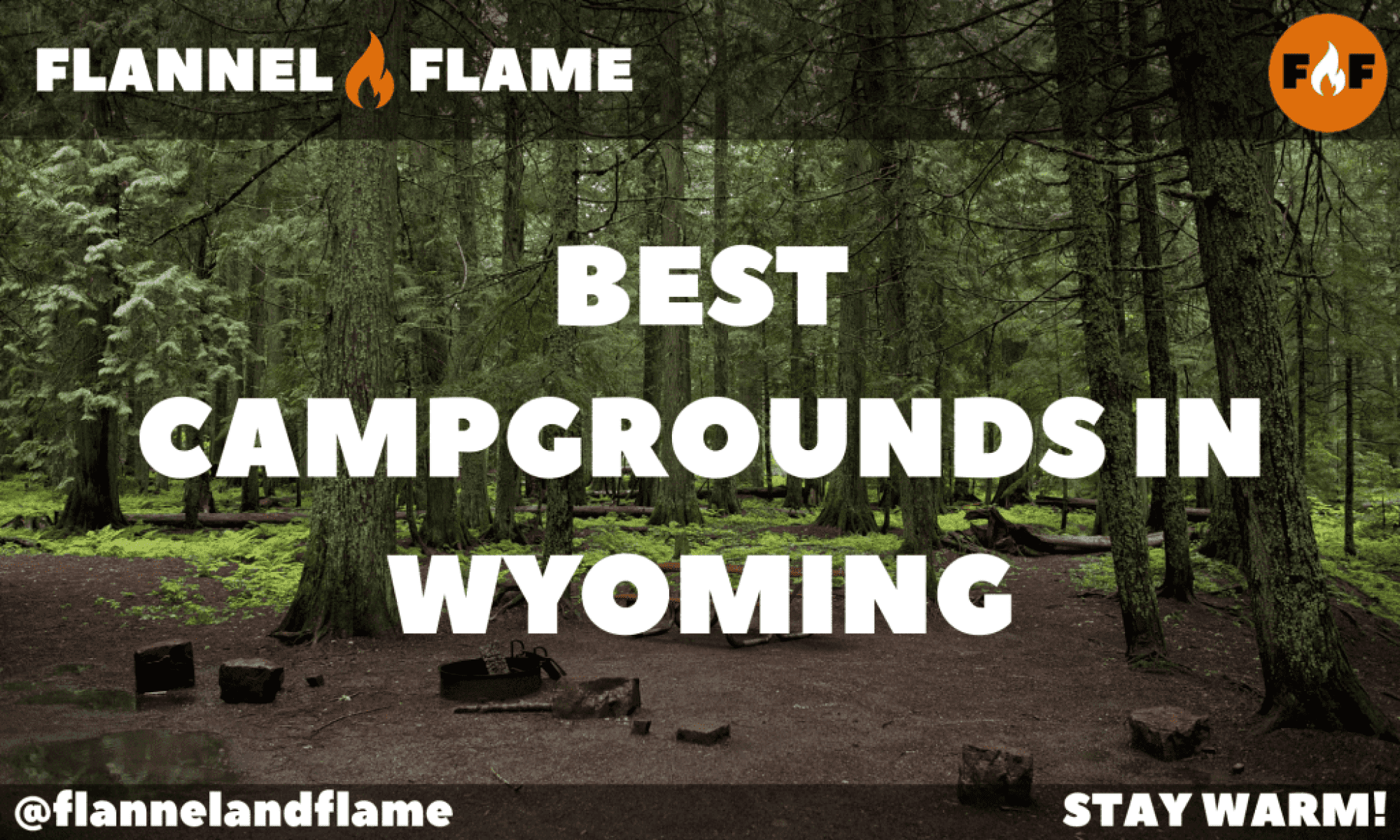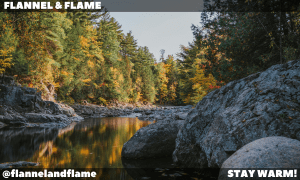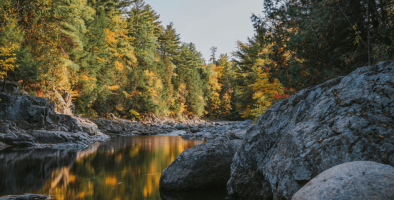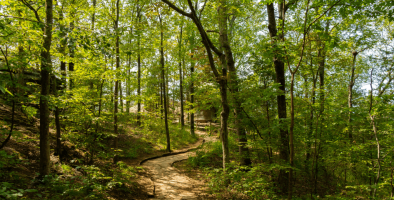Best Campgrounds in Wyoming
Wyoming is the embodiment of the American West—a land of towering mountains, sprawling plains, and otherworldly geothermal features. For outdoor enthusiasts, it offers some of the most spectacular camping experiences in North America. From the iconic peaks of Grand Teton to the colorful hot springs of Yellowstone, Wyoming’s campgrounds serve as gateways to adventures that feel straight out of a nature documentary. This guide explores the most breathtaking camping destinations across the Equality State, providing essential information and vivid descriptions to help you plan your next wilderness escape.
Jenny Lake Campground – Grand Teton National Park
Campsites: 49 (first-come, first-served only)
Reservations: No reservations – arrive early
Address: Teton Park Rd, Moose, WY 83012
As dawn breaks over the jagged Teton range, first light paints the massive granite peaks in hues of pink and gold that reflect perfectly in the mirror-like surface of Jenny Lake. This is the setting that greets campers at what many consider Wyoming’s most scenic campground. Nestled among lodgepole pines and aspens at the base of the mountains, Jenny Lake Campground offers an experience that embodies the essence of Grand Teton National Park.
The campground’s 49 sites are rustic and intentionally simple, preserving the natural character of this extraordinary place. Tall pines create dappled shade across most sites, while gaps in the forest canopy frame perfect postcard views of the Tetons rising dramatically from the valley floor. The absence of RV hookups and generator use maintains a peaceful atmosphere where the sound of mountain breezes through pine needles remains the dominant soundtrack.
What makes Jenny Lake truly special is its location. A short walk from your tent brings you to the shores of the pristine alpine lake, where crystal-clear water reflects the surrounding peaks with stunning clarity. The five-mile trail circling the lake provides constantly changing perspectives of the mountains, while adventurous hikers can take the boat shuttle across the lake to access Cascade Canyon—a glacially-carved corridor leading deep into the Teton Range.
Wildlife viewing opportunities abound near camp. Mule deer frequently wander between campsites in the quiet hours of early morning and evening. Lucky visitors might spot moose feeding in marshy areas near the lakeshore, while overhead, bald eagles and osprey soar against the backdrop of towering peaks.
As sunset approaches, the light show begins again as alpenglow transforms the mountains into glowing sentinels watching over the valley. When darkness falls completely, the star display becomes truly breathtaking. With minimal light pollution, the Milky Way appears as a bright band stretching across the sky above some of America’s most iconic mountains.
Gros Ventre Campground – Grand Teton National Park
Campsites: 300
Reservations: Recreation.gov
Address: Gros Ventre Rd, Kelly, WY 83011
While Jenny Lake gets much of the attention, seasoned Wyoming travelers often prefer the more spacious and serene setting of Gros Ventre Campground. Situated along the cottonwood-lined Gros Ventre River on the eastern side of Grand Teton National Park, this campground offers a different perspective on the Teton Range—one where the full panorama of mountains is visible across the sage-dotted valley floor.
The campground’s 300 sites spread across five loops, offering options for every camping style from tent sites tucked among stands of cottonwoods to open spaces accommodating larger RVs. The setting feels more expansive here, with big Wyoming skies stretching overhead and the sagebrush flats of the valley extending toward the distant mountains.
Morning at Gros Ventre brings the sounds of the nearby river and an excellent chance to witness wildlife. The campground sits within one of the park’s premier wildlife corridors, where bison herds often graze in neighboring meadows and pronghorn—North America’s fastest land mammals—sprint across the sage flats. The massive cottonwood trees support a vibrant bird population, including western tanagers whose bright plumage flashes among the branches.
The location offers convenient access to both Grand Teton and the often-overlooked Gros Ventre Wilderness to the east. Just minutes away, the historic Mormon Row barns stand as testament to early settlers, creating one of the park’s most photographed scenes when framed against the mountain backdrop. In autumn, the surrounding cottonwoods turn brilliant gold, creating a spectacular contrast against the blue mountain peaks.
Evenings bring a special magic as sunset light sweeps across the valley before illuminating the western faces of the mountains. After dark, the campground’s relative distance from park development means exceptional stargazing under some of the darkest skies in the region. The murmur of the river provides the perfect soundtrack for drifting to sleep after a day of exploration.
Signal Mountain Campground – Grand Teton National Park
Campsites: 81
Reservations: Recreation.gov
Address: Teton Park Rd, Moran, WY 83013
Perched on a plateau overlooking the expansive waters of Jackson Lake, Signal Mountain Campground combines stunning Teton views with lakeside recreation opportunities. The setting is nothing short of magnificent—dense lodgepole pine forest opens periodically to reveal vistas where the sawtooth profile of the Teton Range rises directly from the opposite shore of the lake.
The campground’s 81 sites wind through a mature forest where evergreens provide welcome shade during summer months. Many sites offer glimpses of either Jackson Lake or the mountains through the trees, while others feel completely embraced by the forest. The campground strikes a perfect balance between convenience—with flush toilets and potable water available—and natural immersion.
What distinguishes Signal Mountain is the incredible range of activities accessible right from your campsite. A short trail leads directly to the shores of Jackson Lake, where a small marina offers boat rentals and fishing opportunities for lake trout and salmon. Kayakers and stand-up paddleboarders find protected coves to explore, while swimmers brave the refreshingly cool mountain water from small beach areas.
For those seeking elevation, the trail to the summit of Signal Mountain rewards hikers with breathtaking 360-degree views encompassing the entire Teton Range, Jackson Lake, and the vast wilderness of Yellowstone to the north. Wildlife enthusiasts appreciate the campground’s location near prime habitat for moose, bear, and elk—though always viewed with appropriate caution and distance.
As evening approaches, the western sky often explodes with color, silhouetting the jagged peaks against a canvas of orange, pink, and purple. The reflection of this display on Jackson Lake’s surface effectively doubles the spectacle. Later, campfires twinkle through the trees as the temperature drops, reminding visitors of the mountain environment’s rapid temperature swings between day and night.
Madison Campground – Yellowstone National Park
Campsites: 278
Reservations: Yellowstone National Park Lodges
Address: Grand Loop Rd, Yellowstone National Park, WY 82190
In the western region of America’s first national park, Madison Campground occupies a strategic location where two rivers converge against a backdrop of rolling hills and distant mountain ranges. Situated near the junction of the park’s main roads, it serves as an ideal base for exploring Yellowstone’s diverse wonders while offering its own unique charms.
The campground’s 278 sites are arranged in loops through a lodgepole pine forest that has regrown since the historic 1988 fires. This regrowth forest creates a fascinating ecosystem study—mature trees intermingle with younger growth, demonstrating the resilience of nature after disturbance. Sites range from sunny openings to shaded retreats, with the Madison River flowing peacefully along the campground’s edge.
Dawn at Madison often reveals elk grazing in the meadows across the river, their forms emerging from the morning mist that frequently blankets the valley floor. The Madison River itself is renowned as a blue-ribbon trout stream, attracting fly fishers who practice their art in the golden light of early morning and evening.
The campground’s central location puts Yellowstone’s famous features within easy reach. The otherworldly geothermal basins of Lower, Midway, and Upper Geyser (home to Old Faithful) lie just 14 miles to the east, while the colorful terraces of Mammoth Hot Springs are accessible to the north. In the opposite direction, the charming town of West Yellowstone offers supplies and services just outside the park boundary.
What truly distinguishes Madison is the surrounding wildlife habitat. The river corridors and meadows attract grazing animals throughout the day, while bison herds sometimes pass directly through the campground—a reminder that humans are visitors in this wild landscape. Bald eagles can often be spotted perched in tall trees overlooking the river, watching for fish.
As night falls, the area’s distance from major development ensures spectacular stargazing. The campground’s location in a valley means surrounding hills block some artificial light, enhancing the night sky display. During summer months, interpretive ranger programs at the nearby Madison Amphitheater provide fascinating insights into the park’s natural and cultural history.
Bridge Bay Campground – Yellowstone National Park
Campsites: 432
Reservations: Yellowstone National Park Lodges
Address: East Entrance Rd, Yellowstone National Park, WY 82190
Stretching along the northern shores of Yellowstone Lake—North America’s largest high-elevation lake—Bridge Bay Campground offers a water-focused Yellowstone experience. The massive lake, sitting at 7,733 feet above sea level, creates an inland sea effect with its own weather patterns, expansive horizons, and unique ecosystem.
The campground’s 432 sites spread across several loops, some nestled among lodgepole pines and others in more open settings with views across the lake. The variety accommodates different camping preferences, though all share the distinct Yellowstone atmosphere where natural forces—from frequent afternoon thunderstorms to wandering wildlife—remind visitors they’re in a dynamic, living landscape.
Morning at Bridge Bay often features dramatic scenes as steam rises from the lake’s surface when cold air meets water that never truly warms, even in midsummer. Early risers might spot river otters playing near the shoreline or ospreys diving for fish in the crystal-clear water. The lake’s vastness creates a sense of boundless space that contrasts with the forest’s embrace.
The adjacent marina—the largest on Yellowstone Lake—offers boat rentals and guided fishing excursions for native cutthroat trout. For many visitors, taking to the water provides a completely different perspective on the park’s features, with views of the distant Absaroka Mountains and the steaming geothermal areas along some shorelines.
Wildlife viewing opportunities abound in the meadows and forests surrounding the campground. Bison frequently graze in the open areas, while eagles and osprey patrol the skies above. The West Thumb Geyser Basin just a few miles away offers the unique spectacle of geothermal features merging with the lakeshore—colorful hot springs steaming at the water’s edge.
As evening approaches, the lake often becomes perfectly still, reflecting the changing colors of the sky in what feels like an infinity mirror stretching to the horizon. The high elevation means cool nights even in summer, perfect for gathering around campfires before retreating to tents where the gentle lapping of waves against the shoreline lulls campers to sleep.
Slough Creek Campground – Yellowstone National Park
Campsites: 16 (first-come, first-served only)
Reservations: No reservations – arrive early
Address: Northeast Entrance Rd, Yellowstone National Park, WY 82190
Hidden in Yellowstone’s remote northeastern corner lies a campground that represents the park experience at its most authentic. Slough Creek Campground, accessed via a 2.5-mile unpaved road, rewards those making the journey with an intimate wilderness experience that feels worlds away from the park’s more developed areas.
With just 16 sites set in a small meadow surrounded by forest, Slough Creek creates an atmosphere of exclusive access to one of the park’s wildlife hotspots. The sites themselves are rustic and well-spaced, arranged along the banks of the clear mountain stream that gives the area its name. Cottonwood trees provide dappled shade during warm summer days, their leaves rustling soothingly in the constant mountain breeze.
What makes Slough Creek legendary among Yellowstone enthusiasts is its location in the heart of the Lamar Valley ecosystem—often called “America’s Serengeti” for its abundant wildlife. Dawn and dusk bring incredible opportunities to witness the natural drama of predator and prey. Wolf packs hunt across the valley floor, while grizzly bears sometimes emerge from forest edges to forage in meadows painted with wildflowers.
The creek itself draws wildlife to drink and, for fishing enthusiasts, offers one of the park’s premier native cutthroat trout streams. Anglers practice catch-and-release fly fishing in pools and riffles where the clear water reveals every pebble of the streambed. Nearby hiking trails lead deeper into the backcountry, climbing to scenic overlooks that provide perspective on this remarkable landscape shaped by ancient volcanic forces.
Nights at Slough Creek showcase the park at its most peaceful. Without electricity or cell service, the natural rhythms of day and night remain undisturbed. As darkness falls completely, the Milky Way emerges with extraordinary clarity, spanning the sky from horizon to horizon above a landscape where the sounds of coyotes, owls, and the burbling creek create nature’s perfect nocturnal symphony.
Buffalo Bill State Park – Cody
Campsites: 95
Reservations: Wyoming State Parks
Address: 4192 North Fork Hwy, Cody, WY 82414
Just west of Cody—the town founded by legendary showman Buffalo Bill Cody—this state park offers dramatic camping where mountains meet plains along the eastern approach to Yellowstone. Centered around the massive Buffalo Bill Reservoir, the park combines water recreation with spectacular mountain scenery in Wyoming’s rugged Absaroka Range.
The park’s 95 campsites spread across two main campgrounds: North Shore and North Fork. Sites range from lakeside locations where waves sometimes lap just feet from tents to elevated positions offering panoramic views across the reservoir to the surrounding mountains. The setting perfectly captures Wyoming’s expansive character—big sky country where weather systems can be watched approaching for miles.
Mornings often dawn clear and still, with the reservoir’s surface mirroring the surrounding peaks with perfect clarity. Osprey and eagles patrol overhead, occasionally diving to pluck fish from the water in impressive displays of natural hunting skill. The reservoir supports an excellent cold-water fishery, with trout and salmon drawing anglers from around the region.
The park’s location along the north fork of the Shoshone River creates a habitat corridor where wildlife regularly passes through. Bighorn sheep sometimes appear on rocky slopes, while deer and elk frequent the riverbanks during quieter hours. The surrounding Absaroka Mountains—weathered into fantastical shapes by millennia of erosion—create a dramatic backdrop that changes with the angle of the sun throughout the day.
For visitors heading to Yellowstone, Buffalo Bill serves as the perfect preview of wonders to come. For those departing the national park, it offers a welcome opportunity to decompress while still enjoying mountain scenery. The nearby town of Cody, with its world-class Buffalo Bill Center of the West museum complex, provides cultural context for understanding this historic landscape where the West was won and lost.
As sunset approaches, the western sky often explodes with color, reflected doubly in the reservoir’s waters. The transition from day to night brings cooling breezes down from the mountains, carrying the scent of sage and pine across the campgrounds as visitors settle in for evenings under star-filled skies.
Sinks Canyon State Park – Lander
Campsites: 30
Reservations: Wyoming State Parks
Address: 3079 Sinks Canyon Rd, Lander, WY 82520
In a dramatic canyon cutting through the southern Wind River Mountains, Sinks Canyon State Park showcases one of Wyoming’s most fascinating geological features—the mysterious disappearance and reappearance of the Popo Agie River. The river dramatically plunges into a limestone cavern (the Sink) before resurfacing a quarter-mile downstream at the Rise, having traveled underground through passageways still not fully mapped by scientists.
The park’s 30 campsites are distributed between two small campgrounds—Sawmill and Popo Agie—both situated where towering canyon walls provide shelter and ever-changing light displays as the sun moves across the sky. Sites nestle among ponderosa pines, cottonwoods, and jumbles of massive boulders that have fallen from the cliffs above over countless centuries.
Morning in the canyon brings a special quality of light as sunshine gradually descends the eastern canyon wall. The effect creates natural spotlighting that illuminates wildflowers in meadow areas and catches dewdrops hanging from pine needles. Mule deer often graze fearlessly near the campsites, while golden eagles soar on thermals high overhead.
The park serves as a gateway to the southern Wind River Range, with hiking trails leading from the campground into Shoshone National Forest and the Popo Agie Wilderness beyond. The main park trail follows the river upstream past sculpted pools and small cascades, while more challenging routes climb the canyon walls to vistas overlooking the entire area.
What makes Sinks Canyon truly memorable is its accessibility to world-class rock climbing. The canyon’s massive dolomite and sandstone walls attract climbers from across the country, with routes ranging from beginner-friendly slabs to challenging overhangs that test the skills of even veteran climbers. In summer months, the rhythmic calls of climbers to their belayers echo across the canyon, adding a human element to the natural soundscape.
The river itself provides both recreation and fascination. Children and adults alike gather at the Rise to watch massive trout swimming in the deep, crystal-clear pool where the river mysteriously returns to the surface. Scientists have conducted dye tests proving that water entering the Sink takes over two hours to reappear at the Rise—despite the short quarter-mile surface distance between them—and emerges with more volume than went in, suggesting additional underground sources.
As evening settles over the canyon, the cliffs catch the day’s last light while the canyon floor transitions to shadow. Temperatures drop noticeably as cool air settles, creating the perfect environment for gathering around campfires under skies that transition from blue to purple to star-filled black. The canyon’s walls limit light pollution from nearby Lander, enhancing stargazing opportunities in this natural amphitheater.
Vedauwoo Recreation Area – Medicine Bow National Forest
Campsites: 28
Reservations: Recreation.gov
Address: Monument Rd, Laramie, WY 82070
Rising from the high plains between Laramie and Cheyenne, Vedauwoo (pronounced VEE-da-voo) presents one of Wyoming’s most distinctive landscapes. Massive rounded outcrops of Sherman granite—some of the oldest rock in the state at 1.4 billion years—have weathered into fantastic shapes that resemble sculptures created by some ancient civilization. These formations, with names like Turtle Rock and the Citadel, create a playground for explorers and one of the most visually striking campgrounds in the West.
The 28 campsites of Vedauwoo Campground loop through a landscape that feels almost otherworldly. Sites are tucked among ponderosa pines and aspens, with many positioned at the very base of towering rock formations that glow with warm amber light at sunrise and sunset. The elevation of 8,200 feet ensures cool nights even during Wyoming’s warmest summer days.
Morning at Vedauwoo often brings complete stillness, broken only by the calls of mountain bluebirds and the occasional chatter of golden-mantled ground squirrels scampering across the granite. As sunlight creeps across the landscape, it illuminates the intricate textures of the rock—rounded corners, deep cracks, and surfaces covered with multicolored lichen that has grown undisturbed for centuries.
The area has deep significance for Native American tribes, particularly the Arapaho, who named it “Land of the Earthborn Spirit.” Walking through the maze-like passages between formations, it’s easy to understand why the landscape was considered spiritually powerful. Trails ranging from easy interpretive loops to moderate hikes lead through the formations, while climbers test themselves on what’s considered some of the best crack climbing in the country.
Wildlife thrives in this ecotone where mountains meet plains. Mule deer move gracefully between the rocks, while overhead, red-tailed hawks and golden eagles ride thermal currents rising off sun-warmed granite. Lucky visitors might spot secretive fox or bobcat, especially in early morning hours.
When evening brings cooling temperatures, the granite releases the heat absorbed during the day, creating warm microclimates near the rock faces. As darkness falls completely, the rocks transform into black silhouettes against the starry sky. The campground’s elevation and distance from major cities results in exceptional stargazing conditions, with the Milky Way appearing as a bright smudge across the heavens.
Medicine Lodge Archaeological Site – Hyattville
Campsites: 28
Reservations: Wyoming State Parks
Address: 4044 Medicine Lodge Rd, Hyattville, WY 82428
In a sheltered canyon on the western slope of the Bighorn Mountains lies a campground where natural beauty and human history merge in extraordinary fashion. Medicine Lodge Archaeological Site protects a massive sandstone cliff face bearing over 1,000 petroglyphs and pictographs created by Indigenous peoples over thousands of years, with the oldest dating back more than 10,000 years.
The campground’s 28 sites spread along Medicine Lodge Creek beneath mature cottonwoods that provide welcome shade during summer months. The babbling creek runs year-round, sustaining a ribbon of vibrant green through the otherwise arid landscape. Sites are well-spaced, creating private camping areas where the sounds of flowing water and rustling leaves dominate the sensory experience.
Dawn breaks dramatically over the eastern rim of the canyon, gradually illuminating the imposing red sandstone cliff that bears thousands of years of human artistic expression. Deer and turkey often come to drink at the creek in these quiet morning hours, moving with cautious grace through dappled sunlight filtering through the canopy.
The archaeological site itself lies just steps from the campground, where interpretive trails lead visitors along the base of the cliffs. The petroglyphs and pictographs—depicting human figures, animals, and abstract symbols—create a vivid connection to the many generations who found this sheltered canyon an ideal place for seasonal camping, just as modern visitors do today.
Beyond the main archaeological features, hiking trails climb the canyon walls to offer sweeping views of the surrounding Bighorn Basin. The landscape represents a fascinating transition zone where the mountains meet the plains, creating diverse habitats that support a wide range of plant and animal species adapted to this unique environment.
Evening at Medicine Lodge brings particular magic as the setting sun illuminates the red sandstone cliff face, making the ancient artwork glow with renewed vibrancy. After sunset, the protected canyon setting creates ideal conditions for stargazing, with minimal light pollution allowing the night sky to display its full glory above this place where humans have gazed upward in wonder for more than 10,000 years.
Final Thoughts About Camping in Wyoming
Wyoming’s campgrounds offer windows into landscapes that define the American West. From the iconic mountains of Grand Teton to the otherworldly geothermal features of Yellowstone, from ancient rock art to billion-year-old granite formations, these camping destinations connect visitors with both natural wonders and human history. Whether you’re watching wildlife in the Lamar Valley, fishing a blue-ribbon trout stream, or stargazing from a high mountain meadow, Wyoming’s campgrounds provide front-row seats to some of America’s most spectacular landscapes. Pack your gear, embrace the spirit of adventure, and discover why Wyoming remains the ultimate destination for those seeking authentic wilderness experiences.
Other States to Explore
More from Flannel & Flame…
- Mexican Bean SaladBold, zesty, and bursting with color, this Mexican Bean Salad is a side dish that brings the flavor anywhere you roam. A hearty mix of black, kidney, and cannellini beans comes together with crisp bell peppers, sweet corn, and red onion, all tossed in a citrusy vinaigrette loaded with fresh cilantro and just the right… Read more: Mexican Bean Salad
- Cheesy PotatoesGolden, gooey, and loaded with flavor, these Dutch Oven Cheesy Potatoes are a campfire favorite that never disappoints. Tender hash browns are layered with melted cheese, savory seasonings, and just the right amount of smoky goodness from the fire. Baked slow and steady in a Dutch oven, this comforting side dish is perfect alongside grilled… Read more: Cheesy Potatoes
- Alternatives to S’Mores: Sweet Twists and Campfire Treats You’ll CraveThere’s something undeniably magical about a gooey s’more melting between your fingers under a starlit sky. The way the chocolate gets just soft enough, the marshmallow smolders to a golden hue (or charred to a crisp, if that’s your thing), and the graham crackers give that perfect crunch — it’s the taste of summer, nostalgia,… Read more: Alternatives to S’Mores: Sweet Twists and Campfire Treats You’ll Crave
- Best Hiking in New YorkWilderness, waterfalls, and wonder from the Catskills to the Adirondacks New York might be synonymous with skyscrapers, yellow cabs, and a certain iconic skyline—but trust me, beyond the hustle of the city, the Empire State hides some of the most jaw-dropping trails in the Northeast. We’re talking misty mountaintops, mossy forests, gorges carved by ancient… Read more: Best Hiking in New York








